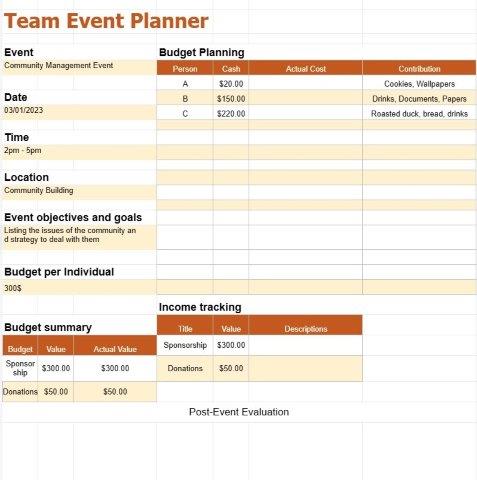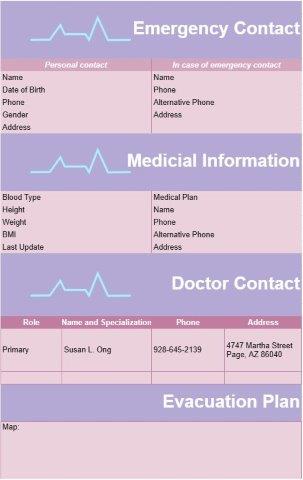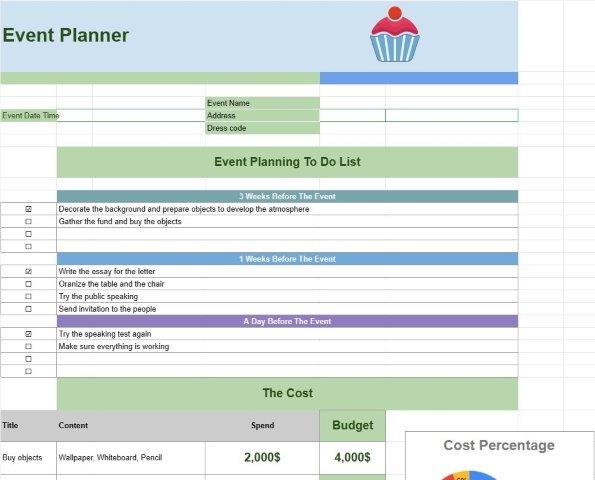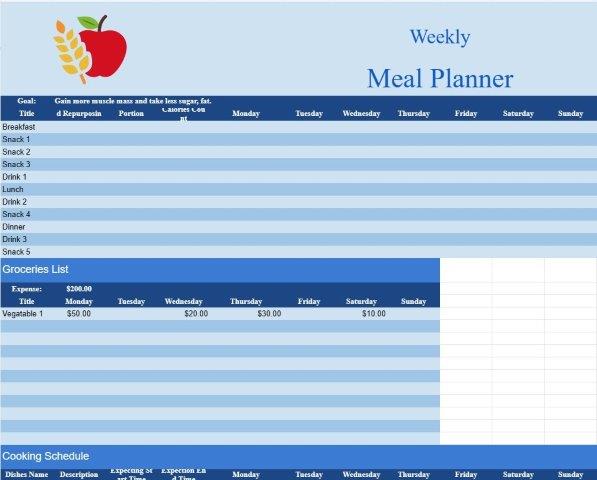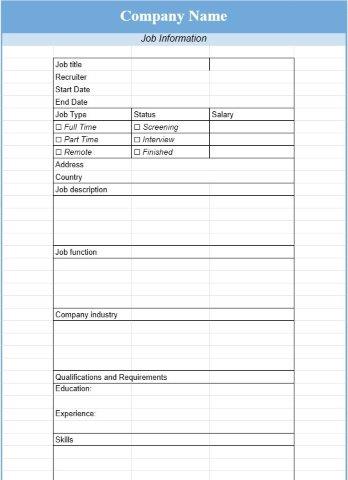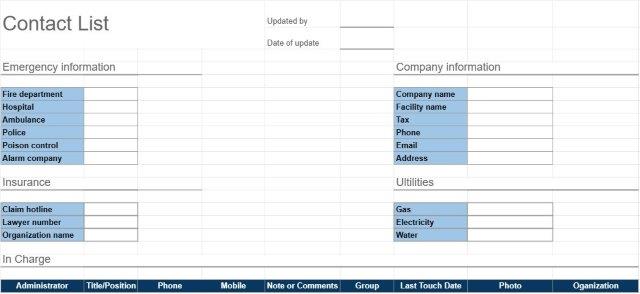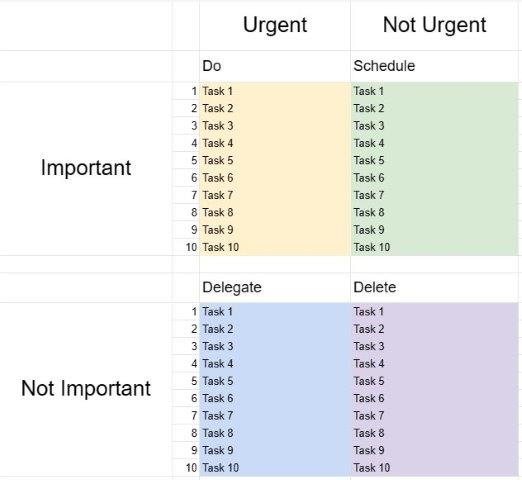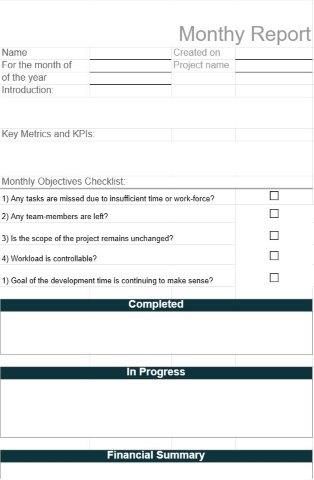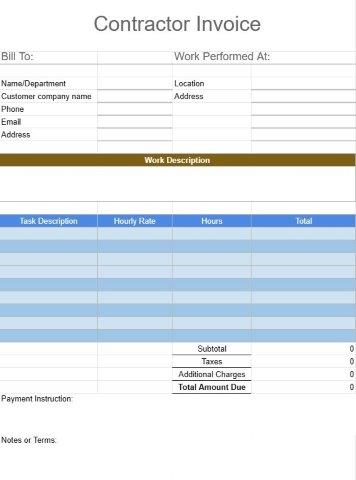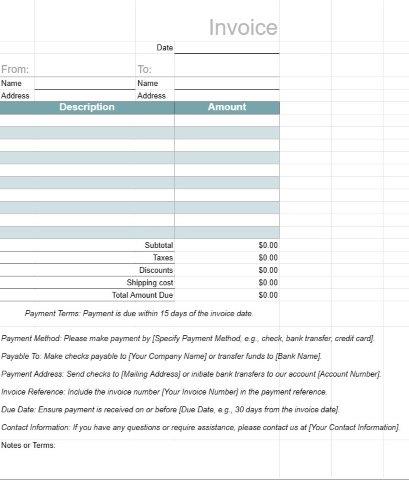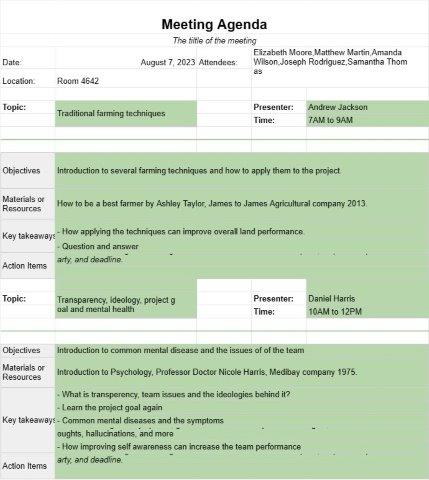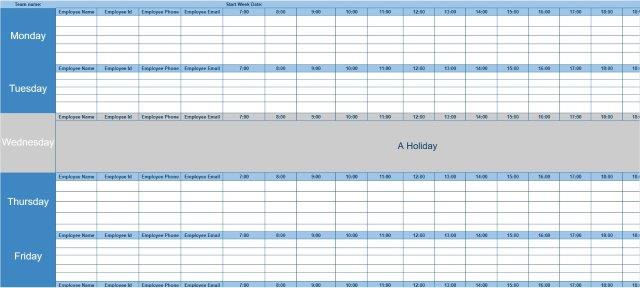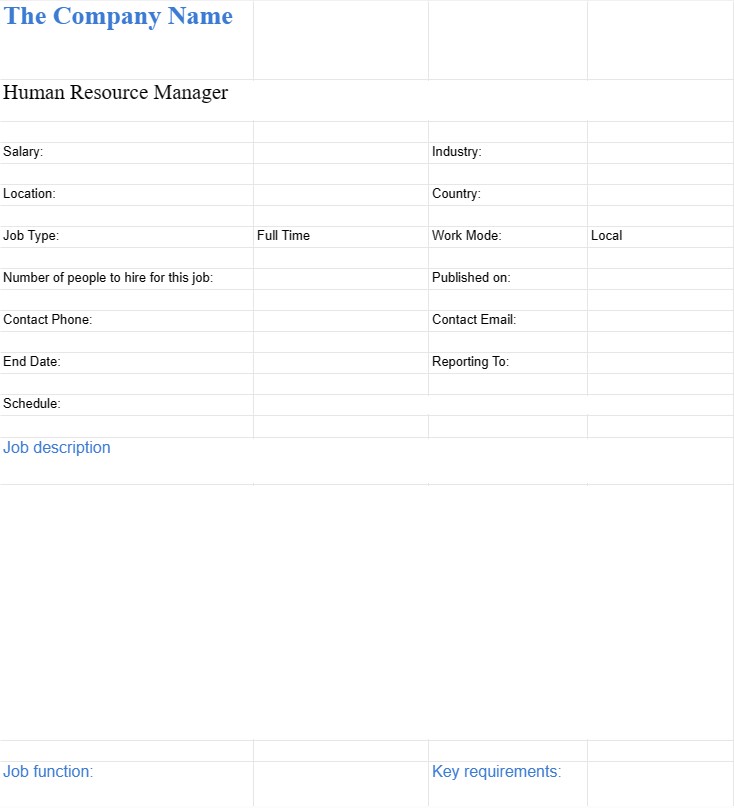

Rekruttering
Kategori : Planlæggere
Organisationen bruger normalt dette til at informere den potentielle kandidat om en mulighed.
En jobinformationsdokument (JID) skabelon til rekruttering er et struktureret format, der bruges af organisationer under ansættelsesprocessen til at kompilere omfattende information om en specifik jobrolle. Det fungerer som et detaljeret referencedokument, der indeholder alle relevante detaljer om stillingen, hvilket gør det lettere for rekrutteringsledere, ansættelsesledere og kandidater at forstå rollens ansvar, krav og forventninger.
Her er de vigtigste komponenter. og formålene med en jobinformationsdokument (JID) skabelon til rekruttering:
- Jobtitel: Angiv tydeligt jobtitlen for nøjagtigt at identificere stillingen. Sørg for, at titlen stemmer overens med organisationens jobstruktur og hierarki.
- Afdeling/Division: Angiv den afdeling eller division, som stillingen tilhører. Dette hjælper kandidater og interne interessenter med at forstå rollens plads i organisationsstrukturen.
- Rapporteringsstruktur: Angiv stillingens plads i organisationshierarkiet, inklusive den direkte supervisor, eventuelle underordnede (hvis relevant), og peer-roller.
- Joboversigt/mål: Giv et kortfattet, men omfattende overblik over rollens formål, mål og primære ansvarsområder. Dette afsnit bør tjene som en hurtig reference for kandidater og rekrutterere.
- Nøgleansvar og pligter: Angiv de vigtigste opgaver og ansvarsområder i forbindelse med rollen i detaljer. Brug punktopstillinger eller nummererede lister til at præsentere disse oplysninger tydeligt. Vær specifik og medtag alle opgaver, der er unikke for stillingen.
- Kvalifikationer og krav:
- Uddannelse: Angiv den nødvendige uddannelse kvalifikationer, såsom grader, certificeringer eller licenser.
- Erfaring: Angiv mindste års relevant erhvervserfaring, der forventes af kandidater.
- Færdigheder: Skitser de væsentlige færdigheder, tekniske færdigheder og kompetencer, der er nødvendige for succes i rollen.
- Foretrukne kvalifikationer: Nævn eventuelle yderligere kvalifikationer eller færdigheder, der ville være fordelagtige for rollen.
- Key Performance Indicators (KPI'er): Hvis det er relevant, beskriv de præstationsmålinger, -mål eller -mål, som medarbejderen i denne rolle vil være ansvarlig for at opnå. Dette hjælper kandidater med at forstå, hvordan deres succes vil blive målt.
- Arbejdsmiljø: Giv oplysninger om arbejdsmiljøet, herunder faktorer som kontorplacering, rejsekrav og eventuelle særlige forhold (f.eks. , eksponering for farlige materialer).
- Løn og fordele: Inkluder detaljer om kompensation, såsom løninterval, bonusser, fordele (f.eks. sygeforsikring, pensionsordninger) og evt. andre frynsegoder eller godtgørelser. Bemærk, at nogle organisationer måske foretrækker at holde lønoplysninger fortrolige indtil senere i rekrutteringsprocessen.
- Ansøgningsinstruktioner: Angiv tydeligt, hvordan kandidater skal søge stillingen. Inkluder detaljer såsom ansøgningsfristen, kontaktoplysninger for indsendelse af ansøgninger og eventuelle specifikke dokumenter eller oplysninger, der kræves (f.eks. CV, følgebrev, portfolio).
- Erklæring om lige muligheder: Medtag en ligestillingserklæring for at understrege organisationens engagement i mangfoldighed og ikke-diskriminering i ansættelsesprocessen.
- Virksomhedsoversigt: Giv et kort overblik over organisationen, dens mission og værdier og kultur. Dette hjælper kandidater med at tilpasse deres forhåbninger til virksomhedens etos.
- Opslagsdato: Angiv datoen, hvor JID'et blev oprettet eller sidst opdateret. Dette hjælper kandidater med at forstå tidslinjen for rekrutteringsprocessen.
- Godkendelse og gennemgang: Angiv navne eller stillinger på personer, der er ansvarlige for at godkende og gennemgå JID. Dette sikrer ansvarlighed med hensyn til at vedligeholde nøjagtige joboplysninger.
- Tilpasning: JID-skabeloner kan tilpasses til at matche de specifikke behov for hver jobrolle og organisation. Sektioner kan tilføjes eller ændres efter behov.
Ved at bruge en Job Information Document (JID) skabelon til rekruttering kan organisationer sikre, at alle interessenter har adgang til konsistente og omfattende oplysninger om jobroller. Denne gennemsigtighed fremmer effektive rekrutteringsprocesser og hjælper kandidater med at træffe informerede beslutninger om deres ansøgninger.
Nem forhåndsvisning og download regnearkskabelon
Se den fulde version af en regnearksskabelon uden begrænsninger for at se, om du kan lide den, så kan du downloade excel-skabelonen for at gemme den på din enhed og bruge den gratis.
Få adgang til regnearksskabelon fra hvor som helst
Dette fungerer på alle populære operativsystemer såsom Windows, MacOS, Linux, iOS. Du kan se regnearksskabelonerne og downloade dem uden yderligere programmer.
Sådan bruger du en skabelon
Find ud af, hvordan du kan forhåndsvise, downloade og derefter bruge regnearksskabelonen ved at følge trinene, som er ekstremt nemme at følge
Flere lignende skabeloner
Se flere af regnearksskabelonerne, som er under samme kategori med den valgte.


